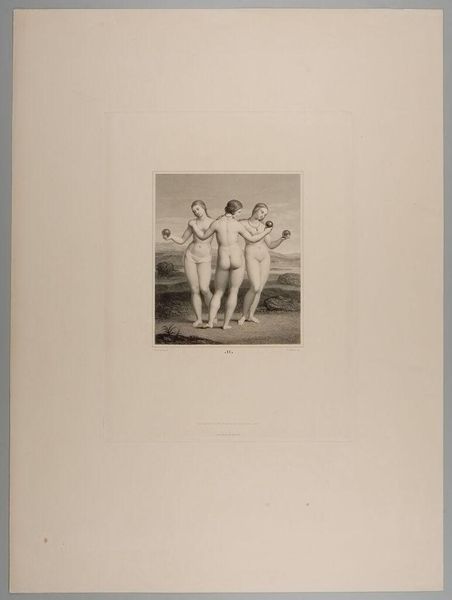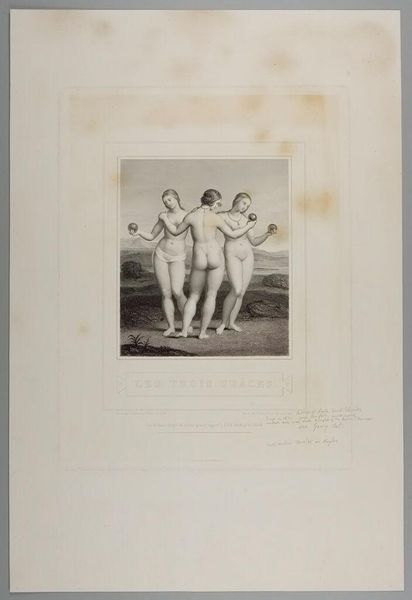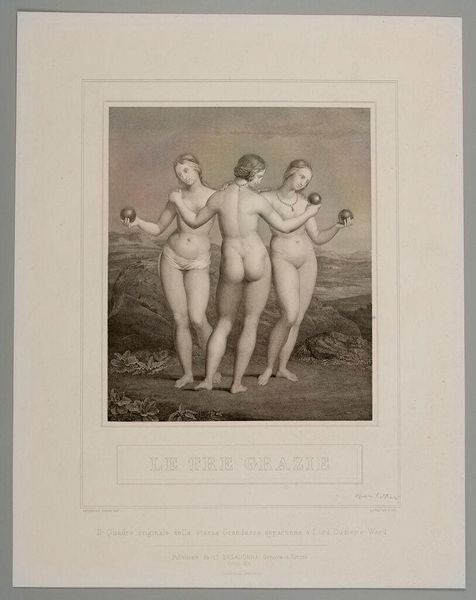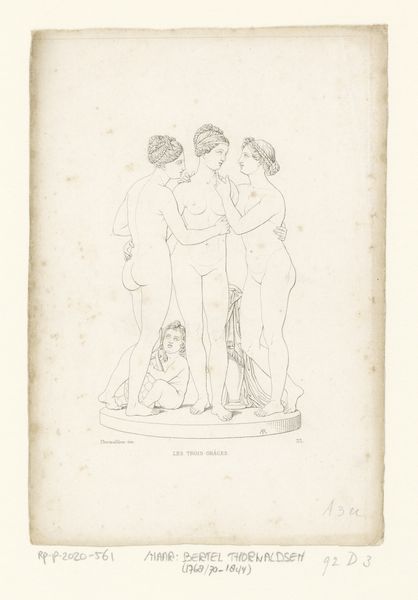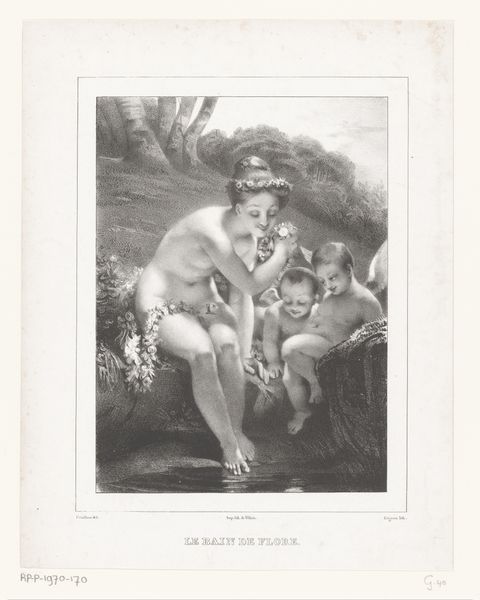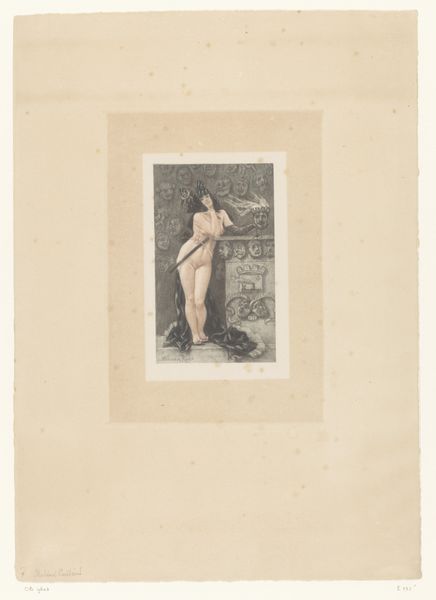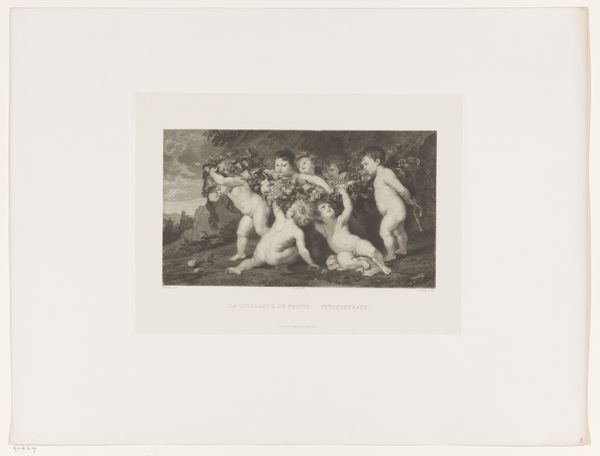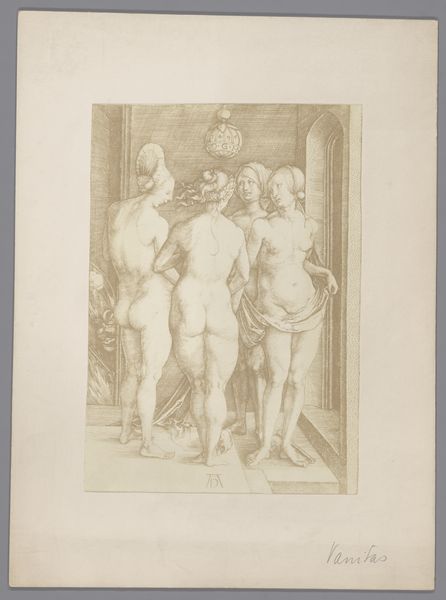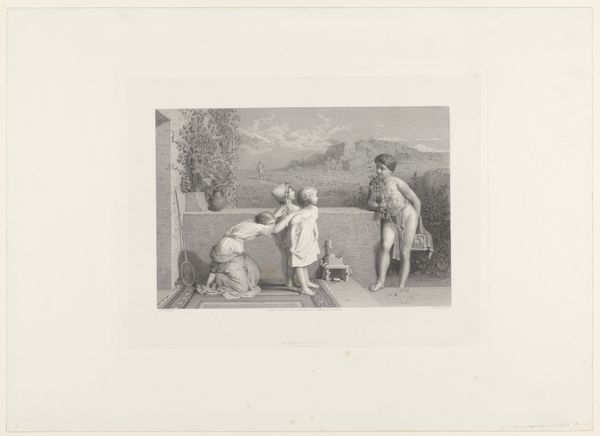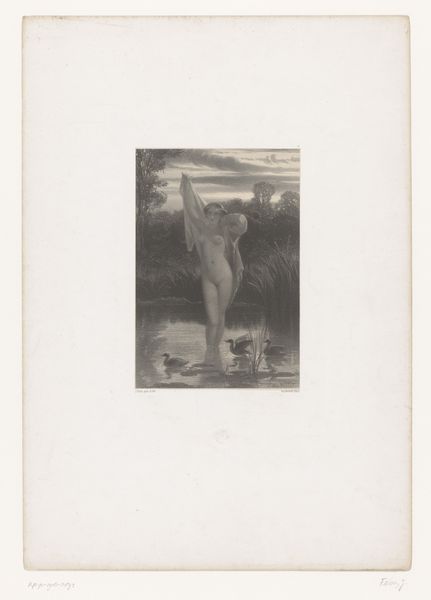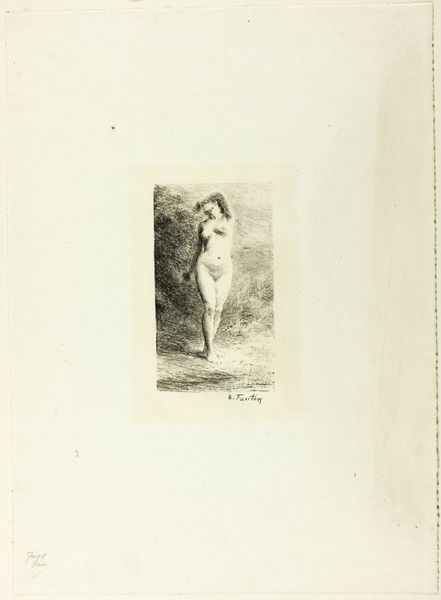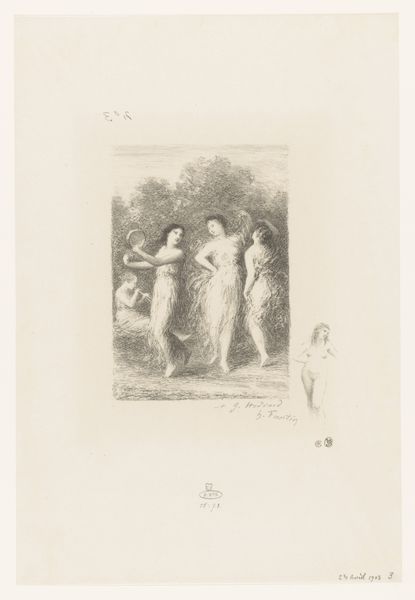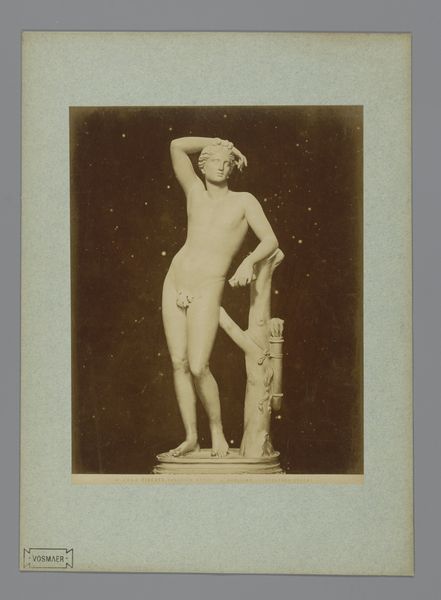
drawing, print, paper, engraving
#
drawing
#
neoclacissism
# print
#
landscape
#
figuration
#
paper
#
academic-art
#
nude
#
engraving
Dimensions: height 391 mm, width 296 mm
Copyright: Rijks Museum: Open Domain
Editor: So, this is "The Three Graces" by François Forster, made in 1841. It's an engraving. What immediately strikes me is its kind of classical purity. It’s very academic. How do you interpret this work in a contemporary context? Curator: This print really speaks to the complex historical relationship between representations of the female nude and power. Think about who commissioned these kinds of images, and for whom they were intended. Can we consider how this neoclassical depiction, with its emphasis on idealized beauty, might actually reinforce certain patriarchal ideas about women? Editor: That's interesting, because initially it just felt very...distant. What makes you say it reinforces patriarchal ideals? Curator: Well, consider how these Graces are presented: passive, objects of visual pleasure, devoid of individual agency. The context matters. Neoclassical art often served to legitimize the status quo, and in this case, perhaps naturalizing a male gaze. These Graces aren't agents in their own story; they’re being observed. But does the technical mastery evident in Forster's print give any power back? Or complicate the male gaze with the female perspective of the artist's assistants in the atelier? Editor: I see what you mean. It's easy to just admire the skill, but it's so important to consider who benefits from these images, and whose stories are being left out. Thanks for the insight! Curator: Exactly. Thinking about whose perspectives are privileged – or erased – that’s crucial to how we understand art’s role in shaping our society. I am always delighted to see a student engaging in questioning of the motives that gave birth to this artwork.
Comments
No comments
Be the first to comment and join the conversation on the ultimate creative platform.
